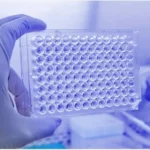Cell toxicity or cytotoxicity is an important indicator of biological assessments. In vitro drugs have diverse cell toxicity mechanisms, for example, irreversible receptor binding, protein synthesis prevention, cell membrane destruction, etc. To determine the possible cause and extent of these damages, researchers require reproducible and reliable cell viability and toxicity assays. Cell toxicity assays depend on assessing several cell functions.
Today, multiple cell cytotoxicity assays are used in pharmacology and toxicology sciences. These cytotoxicity screening assays are classified as dye exclusion, fluorometric, colorimetric, and luminometric assay. Identifying an appropriate assay method is critical to obtain reliable and accurate results. When selecting an ideal cell toxicity assay, researchers consider several factors, such as the test compound, the required sensitivity and specificity, the detection mechanism, and the availability of a laboratory. The current article discusses how cell toxicity assays are shaping the future of biomedical research.
Cytotoxicity screening to accelerate biomedical and clinical research
In vitro cytotoxicity and cell viability assays with cultured cells are widely employed in cytotoxicity screening of chemicals and drug products. Recently, the applications of cell toxicity assays have skyrocketed. As cell viability and cell toxicity assays are inexpensive, rapid, and do not need animal models, they are used in cancer research to assess compound toxicity and cell growth inhibition. Besides, they can test large sample volumes. Cytotoxicity and cell viability assays use several cell functions to assess co-enzyme production, ATP production, enzyme activity, membrane permeability, cell adherence, and nucleotide uptake activity.
Cell cytotoxicity assays have multiple advantages, such as reduced cost, rapid analysis, and potential for automation. Besides, conducting cell viability and toxicity assessments using human cells may often prove relevant compared to some in vivo animal models. However, they may not necessarily be technically more advanced yet to replace animal testing entirely. Ideally, researchers focus on determining the total number of viable and dead cells remaining at the end of an experiment. Currently, they employ a range of cell viability and cytotoxicity assays in pharmacology assessments. The choice of cell toxicity assay defines the type of interaction in the experiment.
Like other robust methods, such as PK/PD assays, cell toxicity and viability assays can be classified based on endpoints such as fluorescence, color changes, luminescence, etc.
Following are some prominent classifications of cell toxicity assays.
- Dye exclusion: erythrosin B, Congo red, eosin, and trypan blue assays.
- Colorimetric assays: MTT, XTT, WST-8, WST-1, MTS, SRB, NRU, LDH, and crystal violet assays.
- Fluorometric assays: CFDA-AM and alamarBlue assays.
- Luminometric assays: real-time viability and ATP assays.
In Conclusion
Multiple cell viability and cytotoxicity assays are available for scientific research. An ideal cytotoxicity assay should be efficient, reliable, rapid, and cost-effective. Besides, it should not affect the test compound. Researchers should cautiously choose an assay method by considering the test compound action and identifying the interaction type. Additionally, the type of cell or tissue employed in the experiment impacts assay performance. Hence cytotoxicity screening is an iterative approach requiring thorough consideration of multiple aspects of cytotoxic assay and the biological matrix of choice.
























+ There are no comments
Add yours